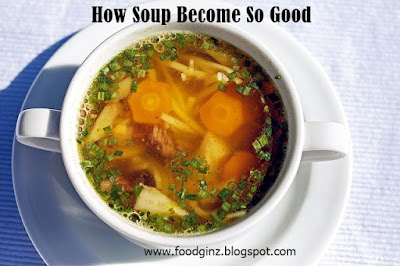How Soup Become So Good
What is it about soups that makes it so appealing, no matter what local ingredients there are?. I believe it is because every culture of all time has had a "lower" course that has had to make do with all the cheapest, least sought after elements. Higher "quality" ingredients frequently have as much to do with a texture just like the flavor, and the richest persons in any society get the pick and choose of the tenderest cuts of meat, the best spring vegetables, and the finest fruit. In contrast, the "peasantry" lives on the tougher large cuts, the bones often included, root vegetables and remaining fruit that has either been dried or fermented.
Require "lower" cuts of meat and main vegetables are not devoid of taste, in fact, they often have a lot more owing to what makes them much less desirable: their texture. Harder foods are denser, and consist of more flavor, more diverse tissues, and often more nutrition. Compare, for instance, red onion and asparagus. Does that have more flavor? Sure, in case you had to eat one natural you would probably pick the asparagus. But ask your self what type you would give up for life in the event you had to!
But using harder foods does not mean you have to quit texture for the extra flavor; nor does intensity of flavor mean you have to have much less subtlety. What it does mean is the fact you have to treat it differently from the way you treat "finer" foods.
For instance, a tenderloin, the tenderest cut of meat in most animals, is usually one that must be cooked quickly lest it gets difficult. But this type of cooking will little for the flavor since it has no time to develop or perhaps convert the flavors that already exist. Again, the finer cuts are more regarding texture. But a flank steak, being much more challenging already, benefits from a low, sluggish, wet cooking process that both extracts flavor and reduces toughness. Soups and stews are perfect for this method, being braising. What you end up with is definitely something at least mainly because tasty as the tenderloin, and nearly as sensitive. And certainly cheaper!
A few take this one step even more and ask what can be done with bone fragments and gristle. Certainly, no 1 wants to chow down on a hunk of bone unless of course, one is of the canine marketing. But there is a lot of taste, and a ton of nutrients simply begging to be let out. In the end, a lot of nutrients entered making them! This is where soup share comes in.
Bones, gristle and similar tissues contain, and a lot more, collagen. This is a protein used in connective tissues, and it has some very interesting houses. Firstly, it dissolves in hot liquid. Second, this coagulates when it cools straight down, provided it is concentrated plenty of. If this makes it sound like jelly, then you are correct: collagen is one of the main ingredients in gelatin. The third property of collagen that is of interest with the food prep is that carries tastes that water cannot.
Simply by extracting the collagen coming from bones and tough cells, we can get a lot of flavor and nutrients that would normally be thrown away. This can be completed with any meat product. In restaurants, veal bones in many cases are used for their high collagen content, but beef and chicken are also very common. Seafood and seafood stocks could be made from bones, gills, bout, and shells. Ham hocks are often used to make a pig stock.

0 Response to "How Soup Become So Good"
Post a Comment